A Miami Gallery History
Introducing Historically Significant Latin American Artists and international Artists to South Florida’s Art Community For More Than 42 Years
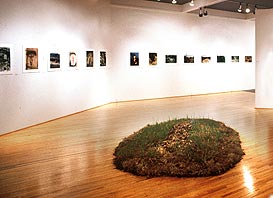
For more than 42 years, Virginia Miller has introduced artists with unique personal visions and techniques to the South Florida art community. These have included numerous mid-career latin american artists and international artists as well as a number of historically significant modern latin american masters.
Some of her exhibitions have been spectacular, such as the one-person show of sculpture and paintings by Karel Appel, the installation of grass growing in the shape of Ana Mendieta’s body, or Eric Staller’s “Lightmobile,” a VW Beetle studded with 1,659 tiny light bulbs flashing in computer-programmed patterns.
Other shows have been bold, such as Fernando Luis’ one-person exhibition of lascivious priests and pregnant nuns, or contemporary Russian art years before glasnost and perestroika, when the Soviet Union was still viewed as our enemy.
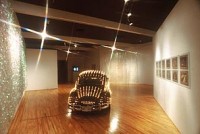
The common denominator has been the “spirit” or artistic integrity of the work, a highly accomplished technique, and outstanding value. Miller strongly believes that a dealer in contemporary art has a great responsibility to help people learn how to look at art, to feel what it’s about, and not to be intimidated by new art forms. Miller exhibits at such shows as Art Miami, Art Palm Beach, and Arteamericas.
Miller’s start in the art field was as unique as the works she sells. After working in a law firm and bank, then managing an advertising agency, she decided to return to college. As an undergraduate, she met a number of artists who complained that local galleries only wanted to exhibit nationally known artists. With her business and advertising background, Miller saw an opportunity, and soon she was organizing exhibitions of fine art in banks and other venues to benefit local charities. Beginning in the late 1960s, those exhibitions may well have made local art history as Dade County’s first synergism of art and business for the benefit of charitable organisations.
Exhibiting Historically Significant Artists
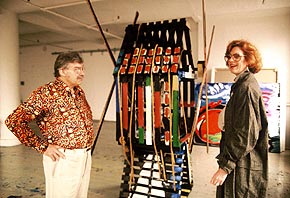
After opening her gallery in 1974, five years after she began dealing in art, Miller sought out and curated major exhibitions of a number of important artists who had never before exhibited in the region.
In 1978 she exhibited a retrospective of Alice Neel’s works on paper dating from 1926 to 1977. It was Neel’s first exhibition in Florida, and like all of Miller’s exhibitions, it was curated by the director herself. Along with the exhibition, the gallery showed the award-winning public television film, “Alice Neel: Collector of Souls.”
Miller, who had served on a panel with Neel at Manhattan’s prestigious New School, persuaded her to show the historic works by offering to dredge them out of the nooks and crannies of her spacious apartment in Spanish Harlem. “My husband and I dragged paintings from beneath her bed and out of the depths of her closets,” Miller recalls.
Clearly, Neel had not seen many of the works for a long while. Years before, an irate lover had cut up and burned 60 of her paintings and 200 drawings and watercolors, and from time to time as the artist saw an artwork she exclaimed, “I thought that son-of-a-bitch had burned that one!”
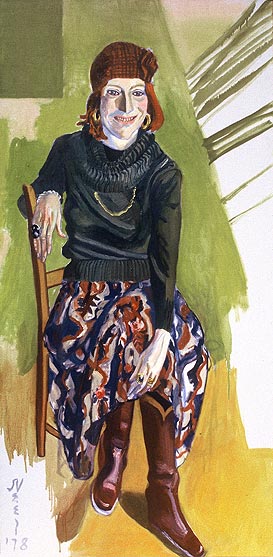
About that same time, Miller arranged for the first exhibition of models and architectural drawings by SITE, the multidisciplinary art and architecture organization from New York. The SITE team had created a number of famous “deconstructed” buildings around the nation, including two in Greater Miami, and Miller arranged for two Greyhound buses, complete with live music and snacks on the road, to take art enthusiasts to tour them. Many of the works from the SITE architectural exhibition went on to be shown in Ronald Feldman Fine Arts in New York and eventually at the Museum of Modern Art.
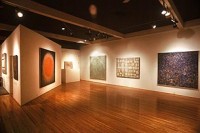
In 1983 Miller scored a national coup with a worldwide exclusive exhibition and sale of “Doonesbury” animation drawings and paintings. “Doonesbury” animation art is rarely seen on the market, as Garry Trudeau only allows it to be sold to benefit select charities–- in this case, for abused children.
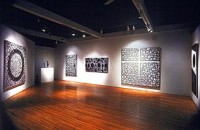
Region’s First History of Photography Exhibition
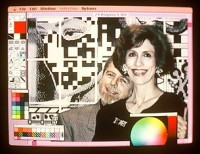
The following year, ArtSpace/Virginia Miller Galleries mounted one of its largest exhibitions: 130 images from 19th and 20th century master photographers. Including works by the inventor of the photographic negative, William Henry Fox Talbot, and the first woman photographer, Anna Atkins, the show presented a history of photography, including works by the early Europeans, the American pictorialists and the then-courant colorists, such as Elliott Porter, represented by a pair of oversize dye transfers.
First Southern Exhibition of Pousette-Dart
In 1985 the gallery presented another historic blockbuster: Richard Pousette-Dart’s “Paintings: From the 1940s to the Present.” It was the first exhibition in the south for Pousette-Dart, youngest member of the first generation of the New York School of abstract expressionists. “This may well be the most important exhibition ever held in the history of Miami,” said Dr. Phillip George, a prominent local collector, to Virginia Miller, who curated the show. Miami Herald art critic Helen L. Kohen called the exhibition “a highlight of the season.” The following year Miller did a second Pousette-Dart exhibition, “Magical Radiances: Black and White” that included works from 1978 to 1981. That exhibition coincided with a one-person Pousette-Dart show at the Fort Lauderdale Museum of Art.
First On-Site Digital Art In December 1990
The gallery made international history in December 1990, when Laurence Gartel used digital cameras developed by Canon for the Gulf War to photograph visitors as they entered the gallery and the first large toner printer, the Canon Bubble Jet, to output manipulated color prints of their images.
Gartel, whose book, “Laurence M. Gartel, A Cybernetic Romance” (Gibbs Smith, 1989, illustrations by Nam June Paik) is considered the first book on an individual’s computer-generated art, believes the event was the first time in history digital art had been produced at a gallery’s opening reception.
Other Historic ‘Firsts’ Include Aboriginal Art, Latin American Masters
In 1992 ArtSpace/Virginia Miller Galleries presented Florida’s first major exhibition and sale of Australian aboriginal art, “Walk About In The Dreamtime.” Its guest of honor was Rover Thomas, a founder of the Turkey Creek School of aboriginal art and one of two Aborigine painters who had represented Australia in the Venice Biennale.
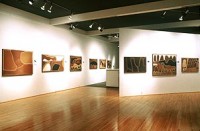
In 1998 the gallery presented a major exhibition of paintings by Ramón Oviedo, the leading master artist of the Dominican Republic. Called “one of the greatest masters in Latin American contemporary art” by José Gómez Sicre, Oviedo had never had a major exhibition in the United States.
In the spring of 2004, ArtSpace/Virginia Miller Galleries presented the latest in its series of exhibitions of modern masters. “Gunther Gerzso: Defining Mexican Abstraction” featured 86 works done from 1935 to 1941 by Mexico’s leading abstract artist, a stellar figure in the pantheon of Latin American artists. The exhibition was a world premiere of the early works as well as the first time Gerzso had a major exhibition in the southeastern United States.
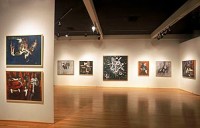
Major Sculpture Commissions Include Massive Bronzes
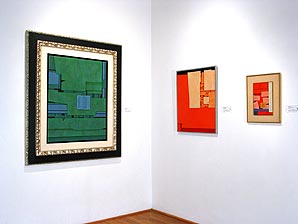
Miller commissioned two of the nation’s largest bronze sculptures—a 36 by 78-footer on Biscayne Bay in Miami and a 60-foot-tall work at the International Airport in Omaha, Nebraska. Other public sculptures include a larger-than-life bronze of baseball immortal Joe DiMaggio and a small boy at the Joe DiMaggio Children’s Hospital in Hollywood, Florida. Miller’s article on outdoor sculpture for Collector-Investor magazine was full of advice for anyone contemplating an outdoor work, particularly one in the subtropics or near salt water.
More than 300 Exhibitions In 12 Locations
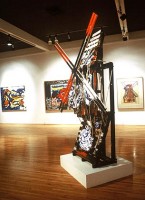
Altogether, over the past 30 years, ArtSpace/Virginia Miller Galleries has presented close to 300 exhibitions in a dozen locations, including her five galleries: Coconut Grove, downtown Miami’s Miamarina, the Biltmore Hotel, the present ArtSpace, and the 9,000-square-foot ground floor of Douglas Centre. Other venues for the gallery’s exhibitions have included Broward Community College, the Boca Raton Museum, and various financial institutions and corporate offices. Many of the shows introduced artists to the region; some exhibitions introduced emerging artists. Some of the artists, like those mentioned above, were already historically significant; others have gone on to become important figures in the art world.
“Early on, I chose to ignore the latest trends and instead to show only works that I personally relate to and artists that I believe in,” says Virginia Miller. “I’ve always insisted that my clients buy only works that they love. Although many of those works have appreciated in value substantially, I urge clients not to consider their art acquisitions merely as a financial investment, but as an investment in their quality of life.”
Judging by the number of grateful letters received by Miller from clients who bought work from her years before, her philosophy has proven successful.
